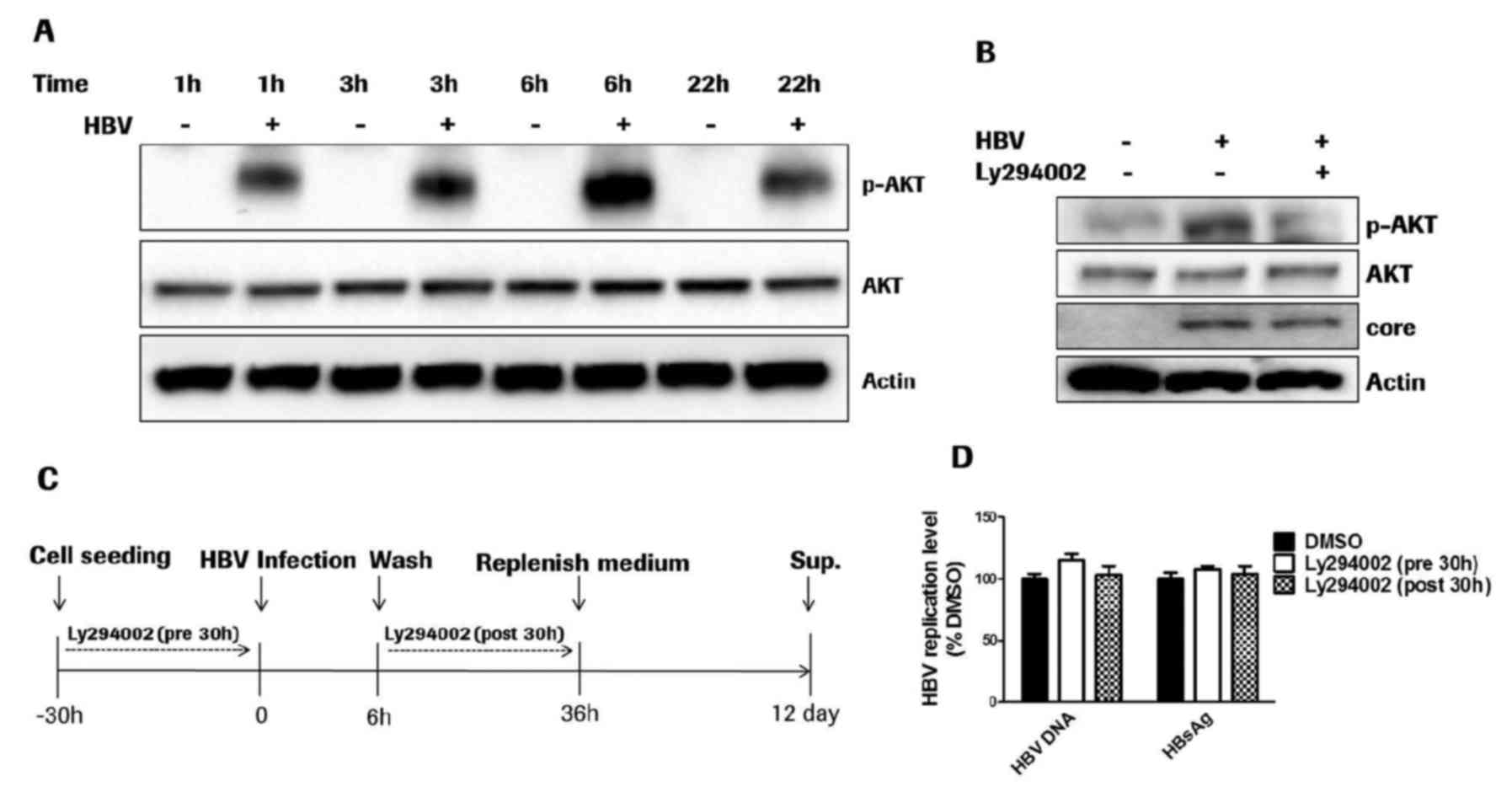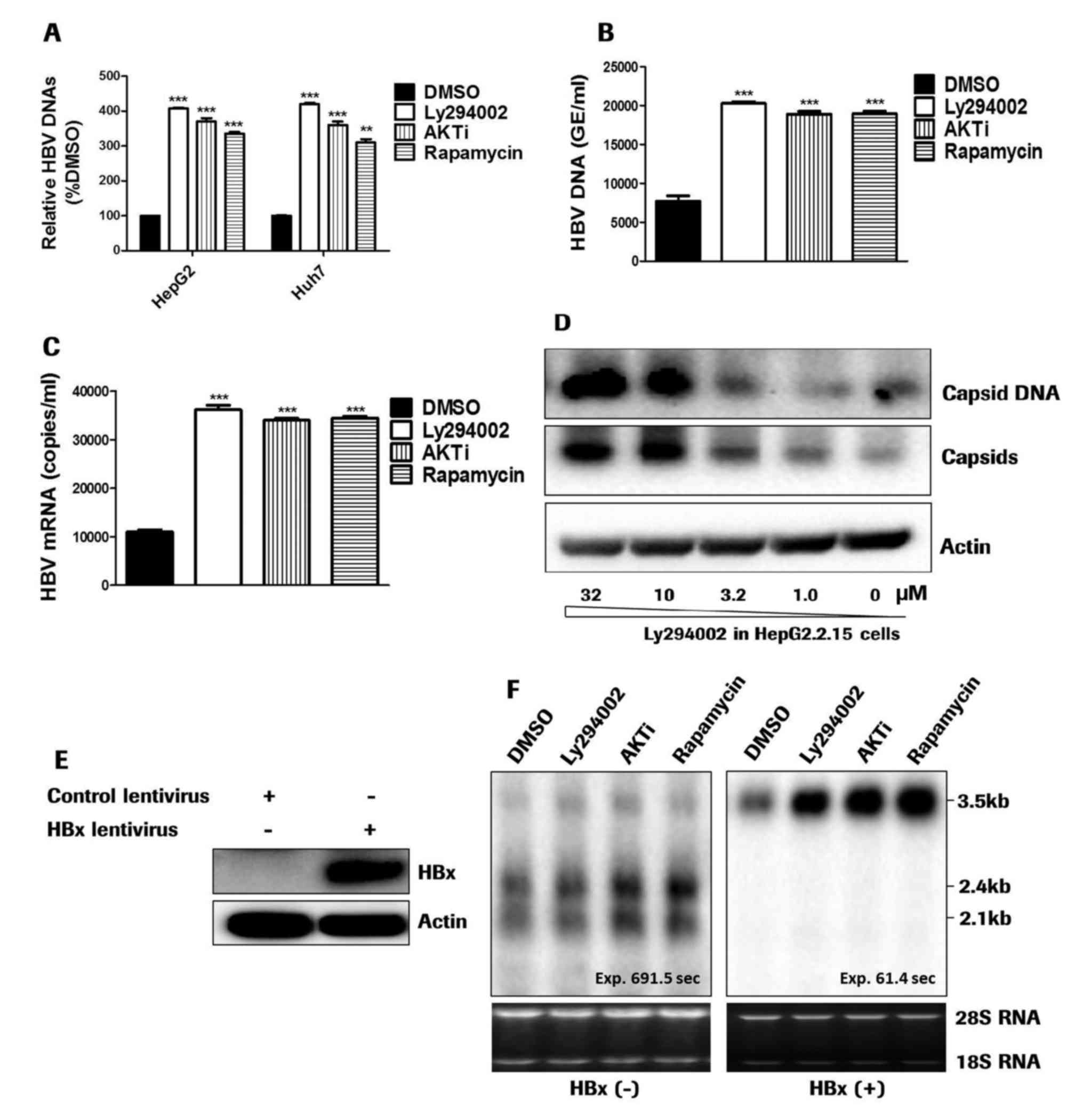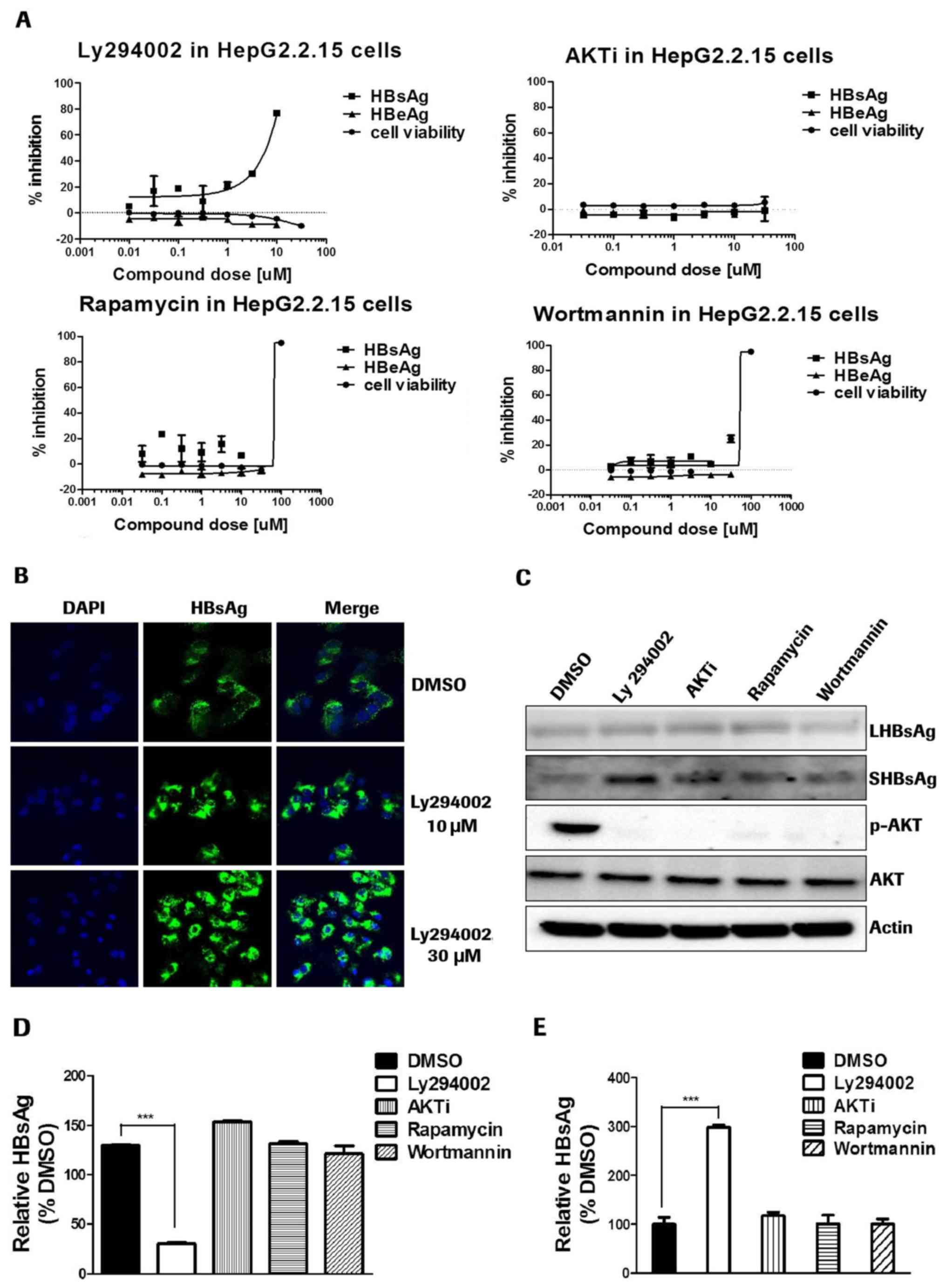|
1
|
Yu X and Mertz JE: Promoters for synthesis
of the pre-C and pregenomic mRNAs of human hepatitis B virus are
genetically distinct and differentially regulated. J Virol.
70:8719–8726. 1996.PubMed/NCBI
|
|
2
|
Raney AK and McLachlan A: Characterization
of the hepatitis B virus large surface antigen promoter Sp1 binding
site. Virology. 208:399–404. 1995. View Article : Google Scholar : PubMed/NCBI
|
|
3
|
Gearhart TL and Bouchard MJ: The hepatitis
B virus X protein modulates hepatocyte proliferation pathways to
stimulate viral replication. J Virol. 84:2675–2686. 2010.
View Article : Google Scholar : PubMed/NCBI
|
|
4
|
Benhenda S, Cougot D, Buendia MA and
Neuveut C: Hepatitis B virus X protein molecular functions and its
role in virus life cycle and pathogenesis. Adv Cancer Res.
103:75–109. 2009. View Article : Google Scholar : PubMed/NCBI
|
|
5
|
Woltman AM, Op den Brouw ML, Biesta PJ,
Shi CC and Janssen HL: Hepatitis B virus lacks immune activating
capacity, but actively inhibits plasmacytoid dendritic cell
function. PLoS One. 6:e153242011. View Article : Google Scholar : PubMed/NCBI
|
|
6
|
Schurich A, Khanna P, Lopes AR, Han KJ,
Peppa D, Micco L, Nebbia G, Kennedy PT, Geretti AM, Dusheiko G and
Maini MK: Role of the coinhibitory receptor cytotoxic T lymphocyte
antigen-4 on apoptosis-Prone CD8 T cells in persistent hepatitis B
virus infection. Hepatology. 53:1494–1503. 2011. View Article : Google Scholar : PubMed/NCBI
|
|
7
|
Lok AS and McMahon BJ: Chronic hepatitis
B: Update 2009. Hepatology. 50:661–662. 2009. View Article : Google Scholar : PubMed/NCBI
|
|
8
|
European Association For The Study Of The
Liver, . EASL clinical practice guidelines: Management of chronic
hepatitis B virus infection. J Hepatol. 57:167–185. 2012.
View Article : Google Scholar : PubMed/NCBI
|
|
9
|
Cooray S: The pivotal role of
phosphatidylinositol 3-kinase-Akt signal transduction in virus
survival. J Gen Virol. 85:1065–1076. 2004. View Article : Google Scholar : PubMed/NCBI
|
|
10
|
Buchkovich NJ, Yu Y, Zampieri CA and
Alwine JC: The TORrid affairs of viruses: Effects of mammalian DNA
viruses on the PI3K-Akt-mTOR signalling pathway. Nat Rev Microbiol.
6:266–275. 2008. View Article : Google Scholar : PubMed/NCBI
|
|
11
|
Liu Z, Tian Y, Machida K, Lai MM, Luo G,
Foung SK and Ou JH: Transient activation of the PI3K-AKT pathway by
hepatitis C virus to enhance viral entry. J Biol Chem.
287:41922–41930. 2012. View Article : Google Scholar : PubMed/NCBI
|
|
12
|
Soares JA, Leite FG, Andrade LG, Torres
AA, De Sousa LP, Barcelos LS, Teixeira MM, Ferreira PC, Kroon EG,
Souto-Padrón T and Bonjardim CA: Activation of the PI3K/Akt pathway
early during vaccinia and cowpox virus infections is required for
both host survival and viral replication. J Virol. 83:6883–6899.
2009. View Article : Google Scholar : PubMed/NCBI
|
|
13
|
Guo H, Zhou T, Jiang D, Cuconati A, Xiao
GH, Block TM and Guo JT: Regulation of hepatitis B virus
replication by the phosphatidylinositol 3-kinase-akt signal
transduction pathway. J Virol. 81:10072–10080. 2007. View Article : Google Scholar : PubMed/NCBI
|
|
14
|
Liu H, Xu J, Zhou L, Yun X, Chen L, Wang
S, Sun L, Wen Y and Gu J: Hepatitis B virus large surface antigen
promotes liver carcinogenesis by activating the Src/PI3K/Akt
pathway. Cancer Res. 71:7547–7557. 2011. View Article : Google Scholar : PubMed/NCBI
|
|
15
|
Rawat S and Bouchard MJ: The hepatitis B
virus (HBV) HBx protein activates AKT to simultaneously regulate
HBV replication and hepatocyte survival. J Virol. 89:999–1012.
2015. View Article : Google Scholar : PubMed/NCBI
|
|
16
|
Lee YI, Kang-Park S, Do SI and Lee YI: The
hepatitis B virus-X protein activates a phosphatidylinositol
3-kinase-dependent survival signaling cascade. J Biol Chem.
276:16969–16977. 2001. View Article : Google Scholar : PubMed/NCBI
|
|
17
|
Shih WL, Kuo ML, Chuang SE, Cheng AL and
Doong SL: Hepatitis B virus X protein activates a survival
signaling by linking SRC to phosphatidylinositol 3-kinase. J Biol
Chem. 278:31807–31813. 2003. View Article : Google Scholar : PubMed/NCBI
|
|
18
|
Zhou Q, Lui VW and Yeo W: Targeting the
PI3K/Akt/mTOR pathway in hepatocellular carcinoma. Future Oncol.
7:1149–1167. 2011. View Article : Google Scholar : PubMed/NCBI
|
|
19
|
Sarbassov DD, Ali SM, Sengupta S, Sheen
JH, Hsu PP, Bagley AF, Markhard AL and Sabatini DM: Prolonged
rapamycin treatment inhibits mTORC2 assembly and Akt/PKB. Mol Cell.
22:159–168. 2006. View Article : Google Scholar : PubMed/NCBI
|
|
20
|
Cerec V, Glaise D, Garnier D, Morosan S,
Turlin B, Drenou B, Gripon P, Kremsdorf D, Guguen-Guillouzo C and
Corlu A: Transdifferentiation of hepatocyte-like cells from the
human hepatoma HepaRG cell line through bipotent progenitor.
Hepatology. 45:957–967. 2007. View Article : Google Scholar : PubMed/NCBI
|
|
21
|
Gripon P, Rumin S, Urban S, Le Seyec J,
Glaise D, Cannie I, Guyomard C, Lucas J, Trepo C and
Guguen-Guillouzo C: Infection of a human hepatoma cell line by
hepatitis B virus. Proc Natl Acad Sci USA. 99:pp. 15655–15660.
2002; View Article : Google Scholar : PubMed/NCBI
|
|
22
|
Zhang S, Guo JT, Wu JZ and Yang G:
Identification and characterization of multiple TRIM proteins that
inhibit hepatitis B virus transcription. PLoS One. 8:e700012013.
View Article : Google Scholar : PubMed/NCBI
|
|
23
|
Shi L, Li S, Shen F, Li H, Qian S, Lee DH,
Wu JZ and Yang W: Characterization of nucleosome positioning in
hepadnaviral covalently closed circular DNA minichromosomes. J
Virol. 86:10059–10069. 2012. View Article : Google Scholar : PubMed/NCBI
|
|
24
|
Lanford RE, Guerra B, Chavez D, Giavedoni
L, Hodara VL, Brasky KM, Fosdick A, Frey CR, Zheng J, Wolfgang G,
et al: GS-9620, an oral agonist of Toll-like receptor-7, induces
prolonged suppression of hepatitis B virus in chronically infected
chimpanzees. Gastroenterology. 144:1508–1517. 2013. View Article : Google Scholar : PubMed/NCBI
|












